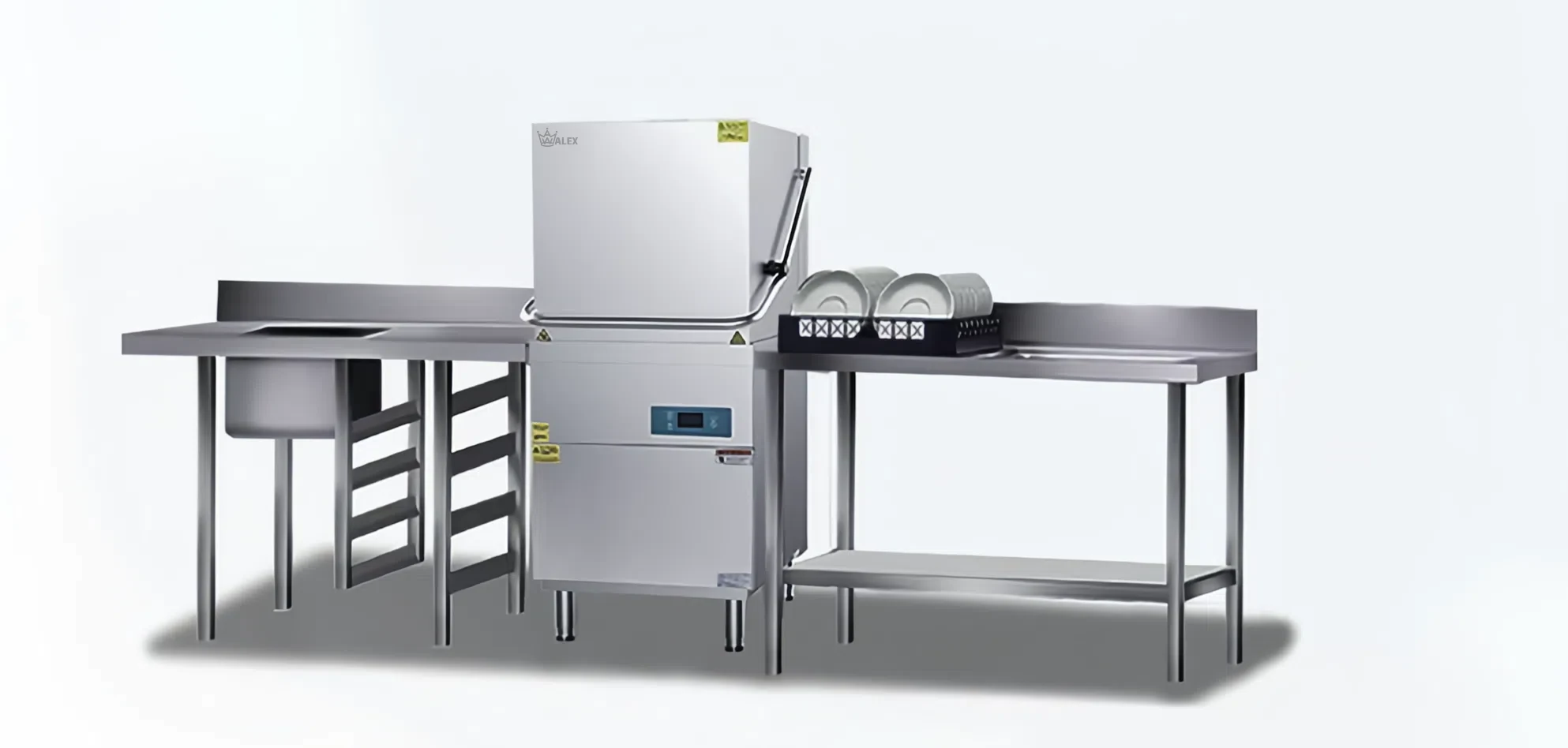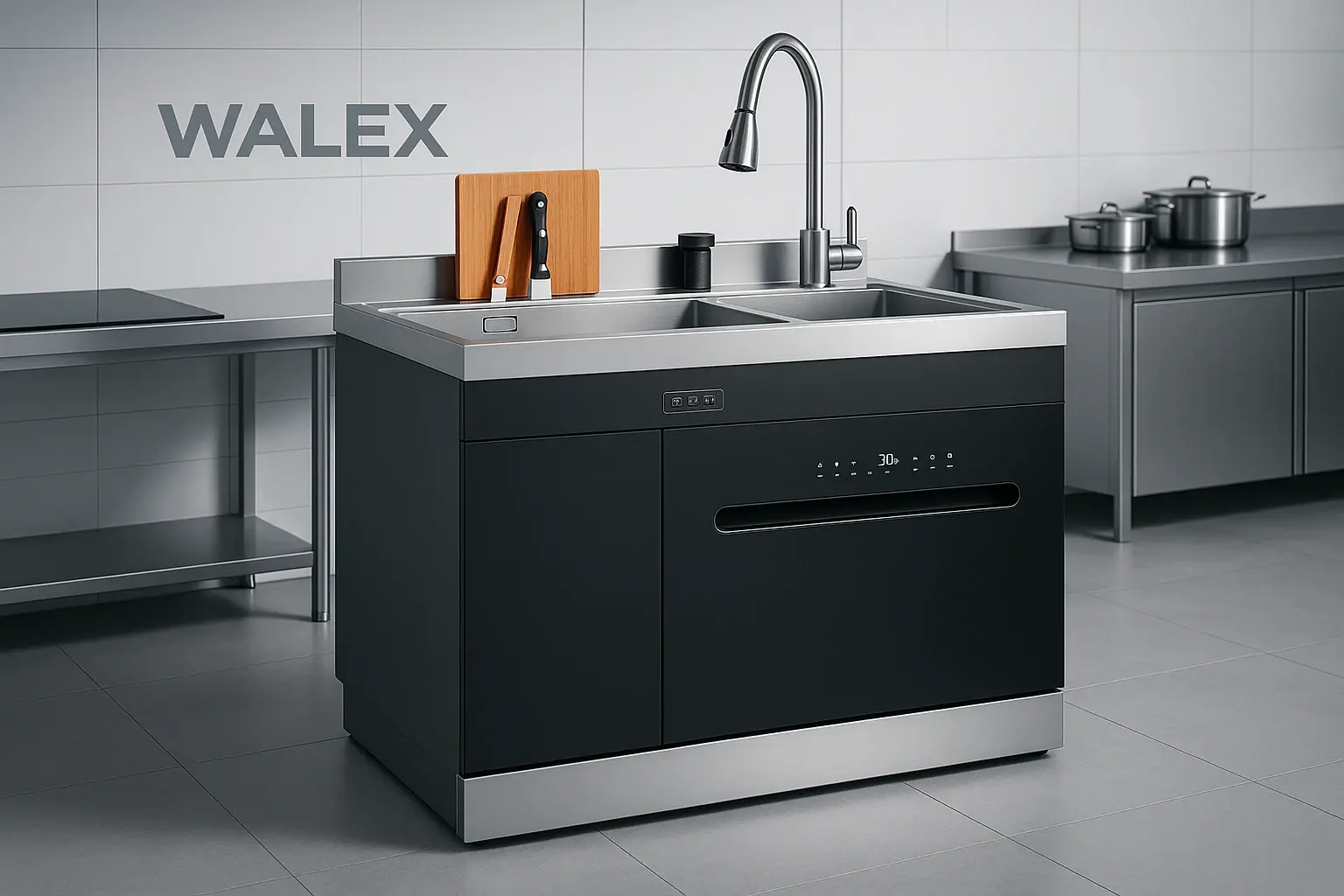The Sunshine Coast represents one of Australia’s most dynamic hospitality markets, with commercial dishwasher requirements driven by unprecedented economic growth, tourism recovery, and evolving industry standards. This comprehensive analysis examines the commercial warewashing landscape, market opportunities, and strategic solutions for businesses across this thriving coastal region.
Executive Summary
The Sunshine Coast’s commercial dishwasher market is experiencing robust growth fueled by a remarkable economic transformation. With businesses employing more than 20 workers increasing by 35% since 2019 and international visitor expenditure reaching record levels of $371.1 million, the region demands sophisticated, energy-efficient commercial warewashing solutions. The broader Australian commercial kitchen appliances market is projected to reach $2.6 billion by 2033, presenting significant opportunities for equipment suppliers and hospitality operators seeking competitive advantages through advanced dishwashing technology.
Market Overview and Economic Context
Regional Economic Performance
The Sunshine Coast has emerged as Australia’s fastest-growing regional economic hub, demonstrating exceptional resilience and expansion across multiple sectors. The region’s gross regional product of $23.73 billion supports 172,498 local jobs across 36,811 businesses, creating a substantial foundation for commercial equipment demand.
The region’s economic diversification extends beyond traditional tourism, with high-value businesses generating over $10 million in annual turnover increasing by 38% since 2019. This transformation has created sophisticated commercial kitchen requirements across multiple sectors including hotels, restaurants, healthcare facilities, educational institutions, and corporate catering operations.
Tourism Industry Recovery and Impact
Queensland’s tourism industry has demonstrated remarkable recovery, with the Sunshine Coast achieving record international overnight visitor expenditure performance. This tourism resurgence directly translates to increased demand for commercial dishwashing capacity across hotels, resorts, restaurants, and catering facilities.
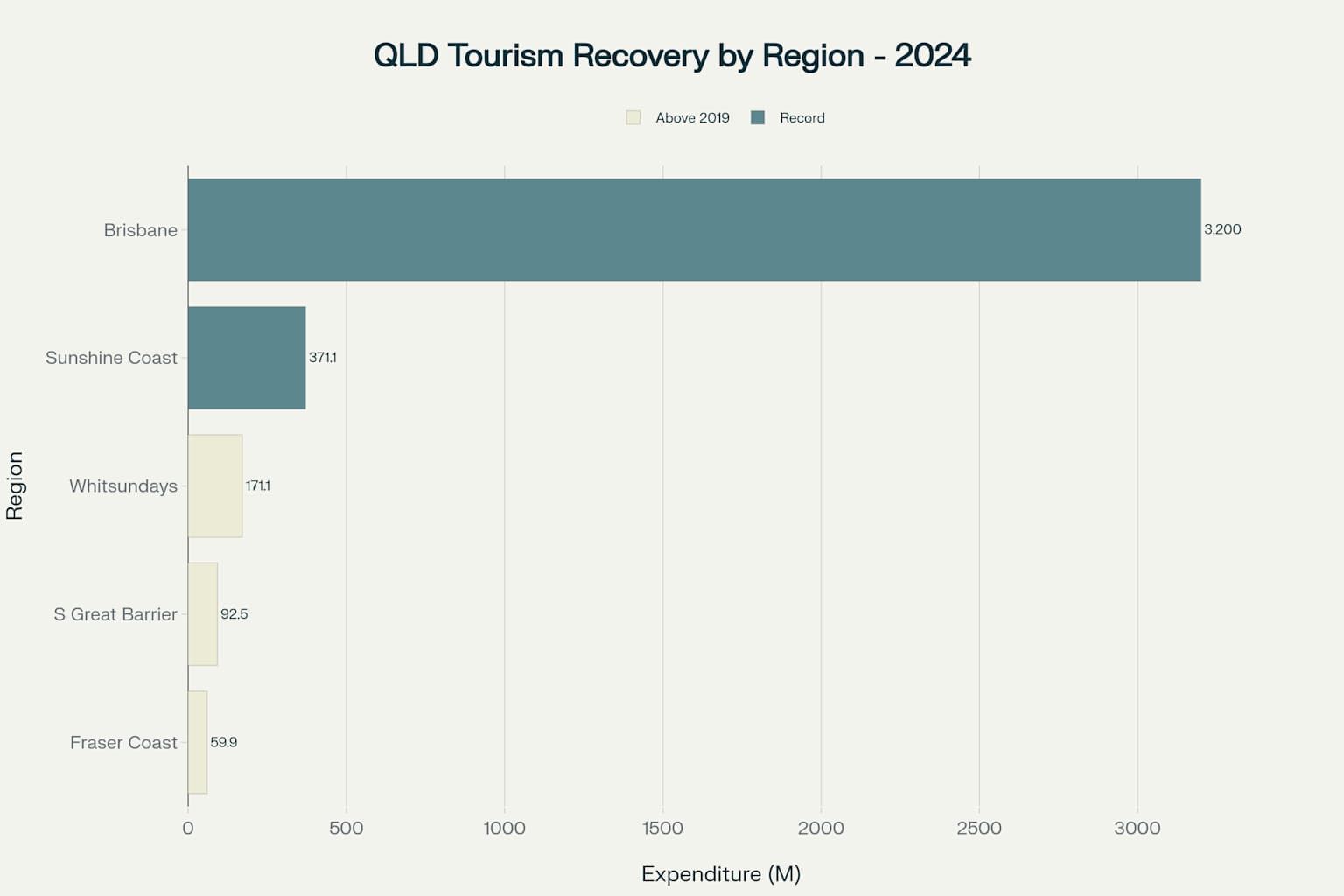
Queensland’s tourism industry has rebounded strongly, with the Sunshine Coast achieving record international visitor expenditure of $371.1 million in 2024, demonstrating the region’s attractiveness as a destination
The sustained growth in visitor numbers requires hospitality operators to invest in reliable, high-capacity dishwashing systems capable of handling peak demand periods while maintaining stringent hygiene standards. The region’s position as a premier destination for both domestic and international visitors creates ongoing pressure for operational efficiency and service quality excellence.
Commercial Kitchen Equipment Market Dynamics
Australian Market Growth Trajectory
The Australian commercial kitchen appliances sector is experiencing sustained expansion, driven by hospitality industry growth, equipment modernization requirements, and increasing focus on energy efficiency and sustainability. Market analysis indicates strong growth potential across all equipment categories.
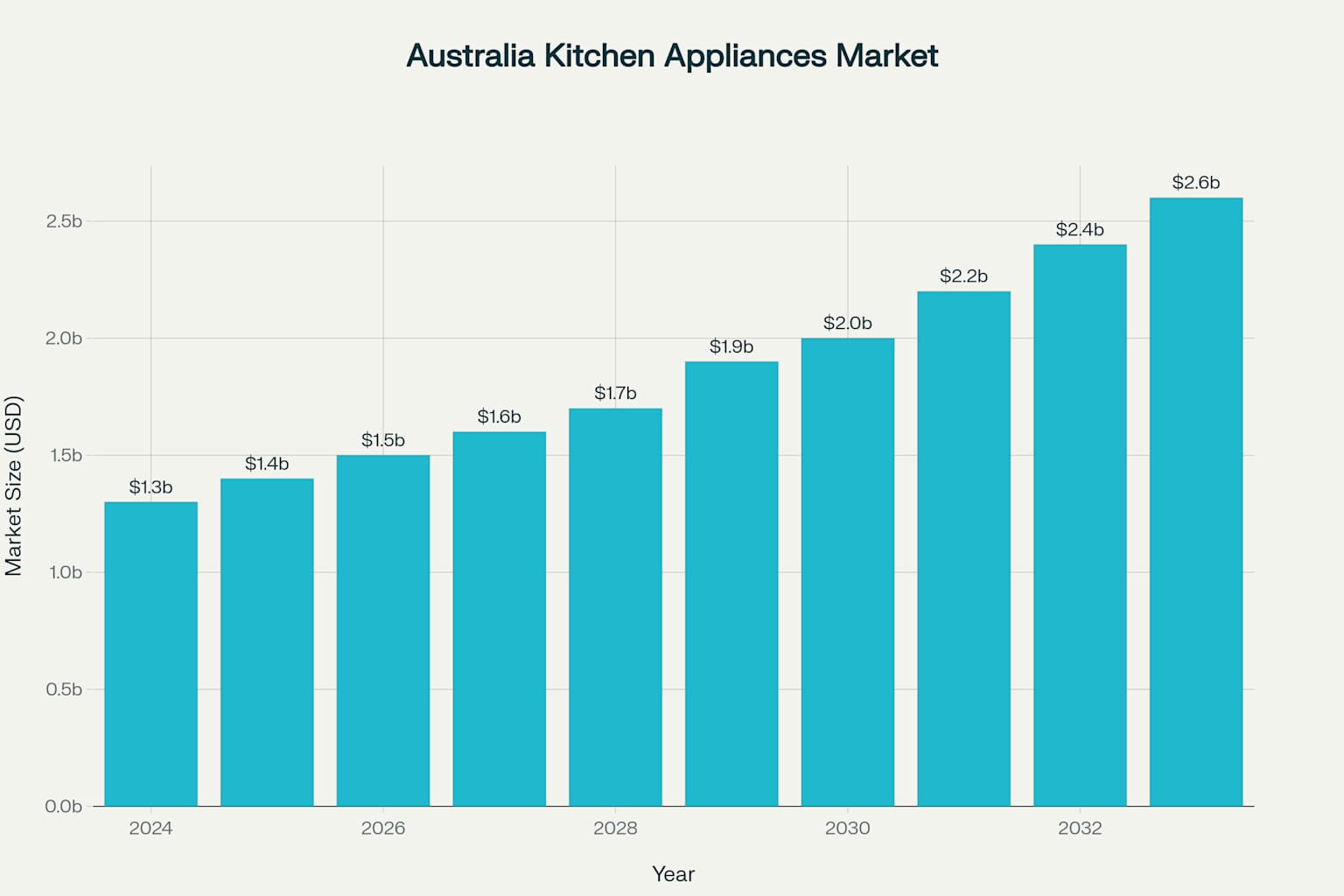
Australia’s commercial kitchen appliances market is projected to grow from $1.3 billion in 2024 to $2.6 billion by 2033, representing a strong CAGR of 7.17%
This growth trajectory reflects broader industry trends including the expansion of quick-service restaurants, casual dining establishments, cloud kitchens, and institutional food service operations. The Sunshine Coast’s diverse economy encompasses all these sectors, creating comprehensive demand for commercial dishwashing solutions.
Dishwasher Market Specifics
The Australian dishwasher market demonstrates particularly strong growth prospects, with projections indicating market value will more than double over the forecast period. This growth is driven by convenience demands, energy efficiency requirements, and urbanization trends that directly impact the Sunshine Coast market.
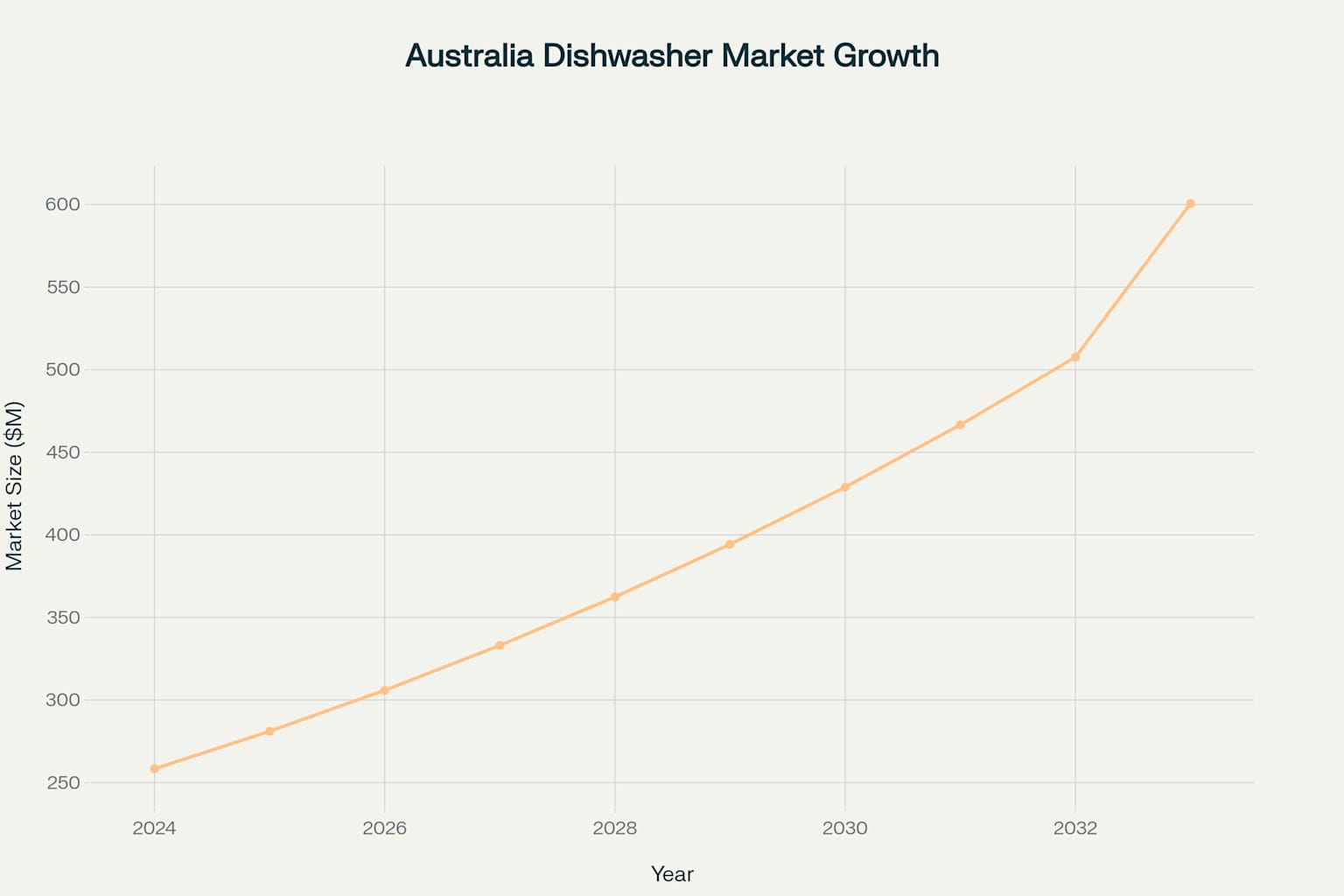
The Australian dishwasher market is expected to more than double from $258.4 million in 2024 to $600.7 million by 2033, driven by increasing demand for energy-efficient models and convenience appliances
Commercial establishments across the region are increasingly recognizing dishwashers as essential operational infrastructure rather than optional equipment. This shift reflects changing labor dynamics, hygiene expectations, and operational efficiency requirements that characterize modern food service operations.
Technology and Efficiency Requirements
Regulatory Environment and Standards
Commercial dishwashers in Australia must comply with comprehensive energy efficiency standards that significantly influence purchasing decisions and operational costs. The regulatory framework encompasses multiple compliance requirements that directly impact equipment selection and performance.
The Australian Greenhouse and Energy Minimum Standards (GEMS) Act mandates energy rating labels for commercial dishwashers, enabling operators to make informed decisions based on operational costs and environmental impact. Queensland’s building standards further specify efficiency requirements for commercial kitchen equipment, influencing specification decisions for new developments and renovations.
Energy Efficiency and Operational Benefits
Modern commercial dishwashers deliver substantial operational advantages beyond basic warewashing functionality. Energy-efficient models reduce electricity consumption by up to 30% per star rating increase, directly impacting operational profitability. Advanced sanitization features ensure compliance with health department requirements while reducing chemical consumption and labor costs.
Water conservation technologies incorporated in premium models address both cost concerns and environmental responsibilities. Given the Sunshine Coast’s focus on sustainable development and environmental stewardship, these features align with broader regional values and regulatory expectations.
Leading Solutions and Suppliers
Market-Leading Brands and Technologies
The Sunshine Coast commercial dishwasher market features several established brands offering distinct advantages for different operational requirements and budget considerations. Each major supplier brings specific technological innovations and service capabilities that address varying business needs.
Premium Technology Leaders: Hobart and Meiko dominate the high-end market with advanced control systems, superior durability, and comprehensive warranty coverage. Hobart’s Advansys LXe electronic controls and Meiko’s M-iClean technology with 24-month comprehensive warranty provide exceptional reliability for high-volume operations.
European Quality Solutions: Winterhalter represents premium European engineering with advanced sanitization features particularly valued by healthcare facilities and fine dining establishments requiring exceptional hygiene standards.
Australian-Made Options: Washtech and Norris offer cost-effective solutions with local manufacturing advantages including faster service response, parts availability, and competitive pricing structures that appeal to budget-conscious operators.
Service and Support Infrastructure
The Sunshine Coast benefits from comprehensive service networks provided by major equipment suppliers. Local distributors such as Caterquip Queensland provide sales, installation, and 24-hour emergency service coverage essential for hospitality operations where equipment downtime directly impacts revenue.
Regional service capabilities include specialized maintenance programs, operator training, chemical supply management, and equipment upgrade planning. These support services are crucial for maximizing equipment lifespan and operational efficiency while ensuring compliance with health and safety regulations.
Market Opportunities and Challenges
Growth Sectors and Applications
The Sunshine Coast’s diversified economy creates multiple growth opportunities for commercial dishwasher suppliers. Key growth sectors include:
Tourism and Hospitality: Continued international visitor growth drives hotel and restaurant expansion, requiring sophisticated warewashing capacity for both front-of-house and banquet operations.
Healthcare and Aged Care: The region’s aging population and healthcare expansion create demand for specialized sanitization equipment meeting medical-grade hygiene requirements.
Education Sector: University and school expansion requires institutional-scale dishwashing systems for cafeterias and catering operations.
Corporate Catering: Business growth and commercial development drive demand for office building food service facilities and corporate catering operations.
Market Challenges and Considerations
Labor Shortage Impact: The hospitality industry’s ongoing labor challenges increase the value proposition for automated dishwashing systems that reduce manual labor requirements while maintaining service quality.
Energy Cost Pressures: Rising electricity costs emphasize the importance of energy-efficient equipment selection, making premium models with advanced efficiency features increasingly attractive despite higher initial investment.
Supply Chain Considerations: International equipment sourcing can create delivery delays and parts availability challenges, increasing the appeal of local manufacturers and distributors with established inventory management.
Strategic Recommendations
Equipment Selection Criteria
Commercial operators should prioritize energy efficiency ratings, warranty coverage, and local service availability when selecting dishwashing equipment. The total cost of ownership analysis should encompass energy consumption, maintenance costs, and productivity impacts rather than focusing solely on initial purchase price.
For high-volume operations, investing in premium brands with advanced control systems and comprehensive warranty coverage provides superior long-term value through reduced maintenance costs and operational disruptions. Mid-volume operations may achieve optimal value through Australian-made equipment offering competitive pricing with adequate performance and local service advantages.
Financing and Implementation
Multiple financing options are available including equipment leasing, operating leases, and asset finance solutions specifically designed for hospitality equipment. These options preserve working capital while enabling access to advanced technology that improves operational efficiency and customer satisfaction.
Implementation should include comprehensive operator training, preventive maintenance scheduling, and chemical supply management to maximize equipment performance and longevity. Professional installation and commissioning ensure optimal performance from the outset while maintaining warranty coverage.
Future-Proofing Considerations
Operators should consider emerging technologies including IoT connectivity, predictive maintenance capabilities, and enhanced sanitization features that may become standard requirements. Selecting equipment platforms that support technology upgrades ensures continued compliance with evolving industry standards and customer expectations.
Conclusion
The Sunshine Coast commercial dishwasher market presents exceptional opportunities driven by sustained economic growth, tourism recovery, and industry modernization trends. The region’s diverse economy creates demand across multiple sectors, from high-end hospitality to institutional food service operations.
Success in this market requires understanding the specific operational requirements of different business segments while selecting equipment and suppliers that provide optimal total cost of ownership. The combination of advanced technology, energy efficiency, and comprehensive service support creates the foundation for long-term operational success in this dynamic and growing market.
Equipment suppliers and hospitality operators who recognize the strategic importance of commercial dishwashing systems as operational infrastructure rather than commodity equipment will capture the greatest opportunities in this expanding market. The Sunshine Coast’s continued growth trajectory ensures sustained demand for sophisticated warewashing solutions that meet evolving industry standards and customer expectations.
